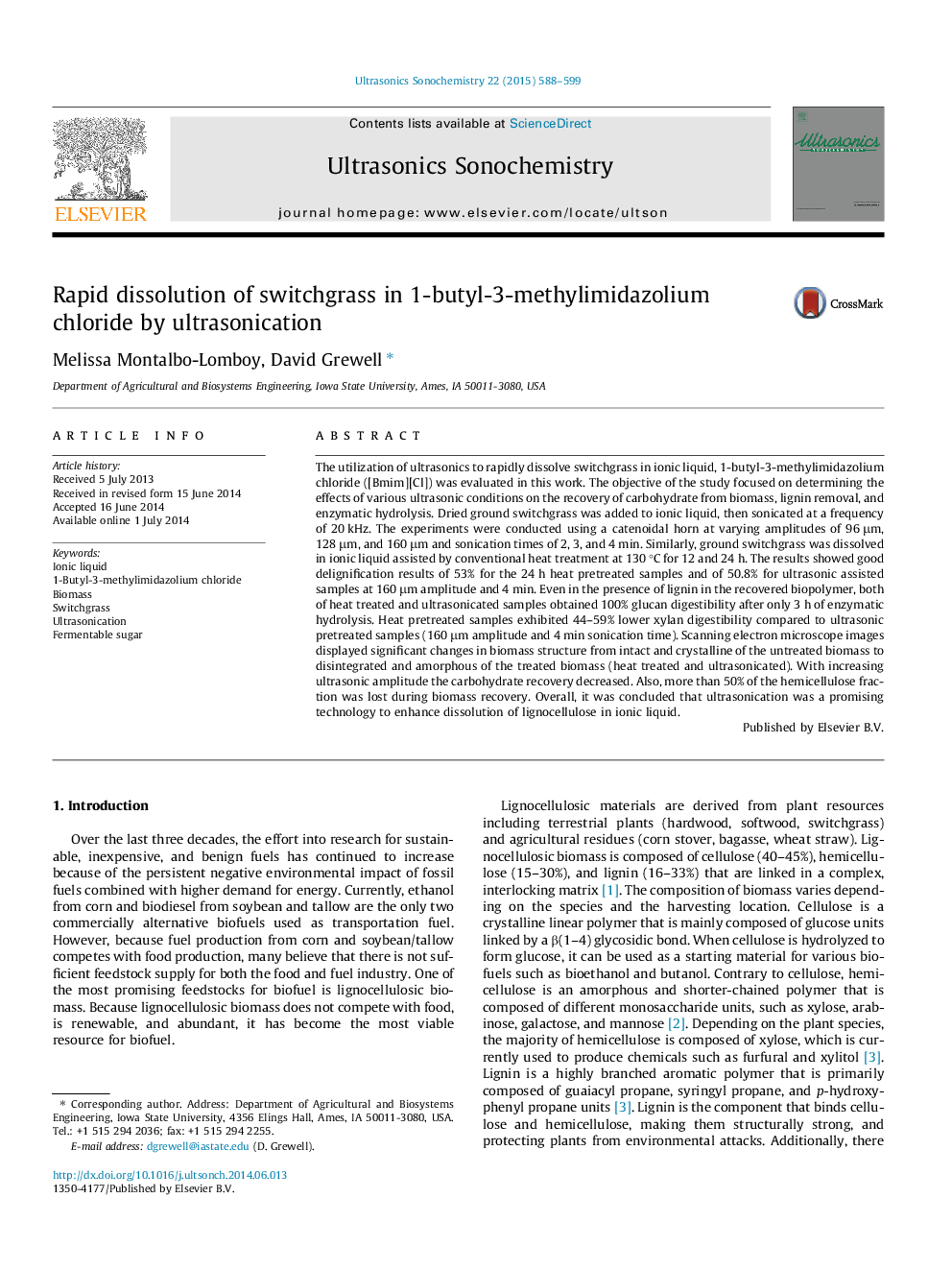| کد مقاله | کد نشریه | سال انتشار | مقاله انگلیسی | نسخه تمام متن |
|---|---|---|---|---|
| 1269685 | 1496882 | 2015 | 12 صفحه PDF | دانلود رایگان |

• Ultrasonic assisted dissolution of switchgrass in ionic liquid.
• Complete biomass dissolution in 4 min using ultrasonics.
• 100% glucose digestibility in both heat and ultrasonics pretreated biomass.
• Complete enzymatic hydrolysis obtained within 3 h.
• 11.5–53% lignin removal observed after dissolution.
The utilization of ultrasonics to rapidly dissolve switchgrass in ionic liquid, 1-butyl-3-methylimidazolium chloride ([Bmim][Cl]) was evaluated in this work. The objective of the study focused on determining the effects of various ultrasonic conditions on the recovery of carbohydrate from biomass, lignin removal, and enzymatic hydrolysis. Dried ground switchgrass was added to ionic liquid, then sonicated at a frequency of 20 kHz. The experiments were conducted using a catenoidal horn at varying amplitudes of 96 μm, 128 μm, and 160 μm and sonication times of 2, 3, and 4 min. Similarly, ground switchgrass was dissolved in ionic liquid assisted by conventional heat treatment at 130 °C for 12 and 24 h. The results showed good delignification results of 53% for the 24 h heat pretreated samples and of 50.8% for ultrasonic assisted samples at 160 μm amplitude and 4 min. Even in the presence of lignin in the recovered biopolymer, both of heat treated and ultrasonicated samples obtained 100% glucan digestibility after only 3 h of enzymatic hydrolysis. Heat pretreated samples exhibited 44–59% lower xylan digestibility compared to ultrasonic pretreated samples (160 μm amplitude and 4 min sonication time). Scanning electron microscope images displayed significant changes in biomass structure from intact and crystalline of the untreated biomass to disintegrated and amorphous of the treated biomass (heat treated and ultrasonicated). With increasing ultrasonic amplitude the carbohydrate recovery decreased. Also, more than 50% of the hemicellulose fraction was lost during biomass recovery. Overall, it was concluded that ultrasonication was a promising technology to enhance dissolution of lignocellulose in ionic liquid.
Journal: Ultrasonics Sonochemistry - Volume 22, January 2015, Pages 588–599